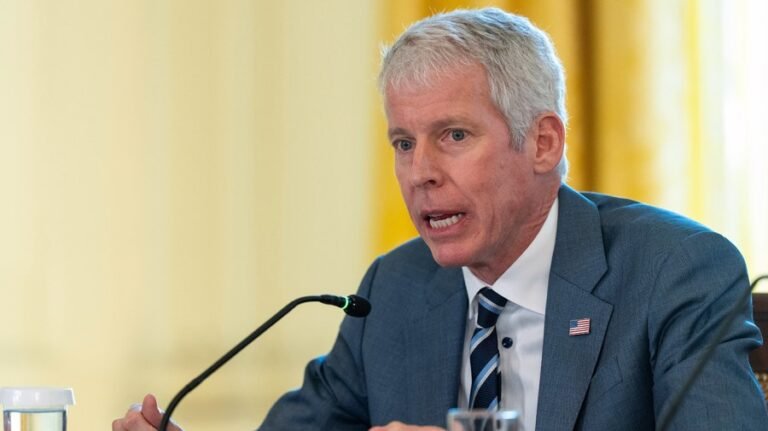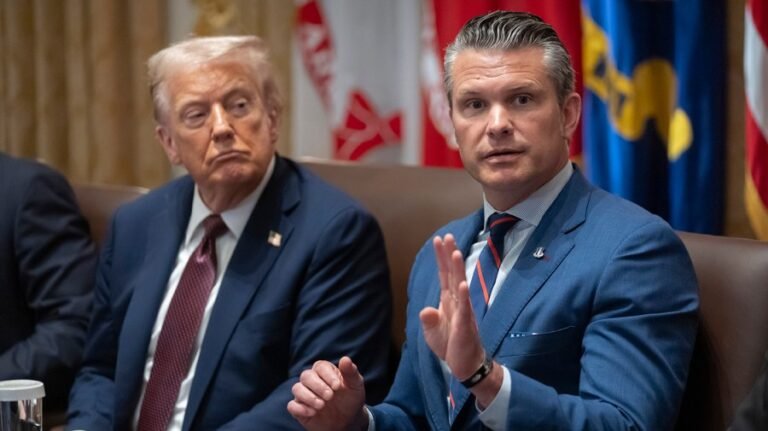
As the U.S. withdraws into isolationism, European nations are racing to fill the vacuum, but they face great challenges.
Following his appalling treatment in the Oval Office, Ukrainian President Volodymyr Zelensky received a hero’s welcome in Britain, including a private meeting with King Charles at his Sandringham estate.
British Prime Minister Keir Starmer is taking the lead in organizing a “coalition of the willing” to provide Ukraine with the security guarantees it desperately needs before it can engage in meaningful negotiations with Russia.
Starmer is providing Ukraine weapons, loans and the promise of British peacekeeping troops once a deal is reached. He said that while the NATO allies need U.S. support, Europe must do the “heavy lifting.”
French President Emmanuel Macron went further. “I want to believe that the U.S. will stand by our side,” he told the French people, “But we have to be ready for that not to be the case.”
In addition to promising Ukraine aid, Macron has raised the possibility of extending France’s nuclear weapons umbrella over the rest of Europe to deter Putin from further aggression.
France’s 290 nuclear weapons don’t come close to matching Russia’s 6,375, but they don’t need to for an effective deterrent. If just 10 percent of these weapons reach their targets, they might destroy 29 cities — far more than any nation on the planet could afford to lose.
Germany is seriously considering reinstating conscription.
Polish Prime Minister Donald Tusk told his parliament “We will try to have a model ready by the end of this year so that every adult male in Poland is trained in the event of war so that this reserve is comparable and adequate to the potential threats.”
Other European countries are increasing their defense spending.
At the emergency summit in Brussels, European Commission President Ursula von der Leyen declared that to ensure its security, the European Union is determined “to invest more, to invest better and to invest faster together.” She backed that pledge with a plan to increase defense spending by $843 billion and offered €150 billion in loans to help meet that goal.
Leaders of the 27 nations also agreed to loosen budget restrictions, allowing member states to spend more on defense.
These developments suggest that Europe may finally be stepping up to develop the common defense policy that has been the subject of so much discussion but little action in past decades.
Encouraging though the signs are, turning the continent’s extensive resources into military assets will take time, which Ukraine may not have.
With a population of 448 million (larger than the U.S. and more than double that of Russia), a GDP of $18.4 trillion, and the largest share of trade in manufactured goods and services (14 percent), the EU could produce a military to match that of the U.S. and exceed that of Russia.
Even before the proposed build-up, member states already have considerable combined power.
While no individual nation comes close to matching the 1.5 million military personnel in Putin’s war machine, collectively EU armed forces far exceed it with a combined strength of approximately 1.9 million in 2020.
Although European nations, as well as Ukraine, have grown dependent on U.S. armaments, the EU has the resources, infrastructure and technological capacity for a “defense industry renaissance,” provided there is the political will to implement it.
Europe has recently surpassed the U.S. in the proportion of weapons provided to Ukraine, although the U.S. still provides the most advanced air defense and offensive systems.
Creating a European defense force, however, requires more than adding up the capabilities of EU member states and increasing weapons production.
Common doctrine, interoperability (standardized ammunition, communications, etc.) and an overall command system are necessary to meld the various militaries into a unified force.
Fortunately, NATO membership has provided some of these requirements, including a military command committee capable of strategic planning.
Estimates on how long it would take for Europe to build up its militaries to match Russia’s range from 2-5 years.
Beyond developing its forces, the real challenge for Europeans will be maintaining the political will to act in concert. While EU states would certainly stand together to resist a full-scale Russian attack, how might they respond to lower-level threats? For example, what would they do if Putin used the large Russian minorities in Latvia and Estonia to launch an insurgency against their governments and intervene to support it?
Ukraine will be a test of solidarity.
Military experts estimate that Starmer’s “coalition of the willing” could deploy 30,000 of the up to 200,000 international peacekeepers Zelensky says would be necessary to deter a renewed Russian offensive following a ceasefire.
Europe will not be able to build up its forces in time to save Ukraine, although it might provide enough money and hardware to delay defeat.
Without U.S. military aid and intelligence, experts believe the Ukrainian military could start to crack within four months.
Even if Kyiv and Moscow hammer out a deal and especially if Ukraine falls, the EU would be wise to forge ahead with its aggressive defense buildup and complete it as soon as possible.
The threat from Russia will not go away.
Putin has made clear his intent to rebuild as much of the Soviet empire as possible and to reassert Russian power on the world stage.
EU states boarding Russia and Belarus (a Moscow satellite) are particularly vulnerable and will need the same security guarantees Ukraine demands.
The current U.S. administration’s pull-back from NATO may be temporary, but it serves as a grim warning that Europe can no longer count on unconditional American support.
A robust defensive capability would not only enable the EU to defend itself against Russia. It would also enable Brussels to stand up to Washington.
American dominance of NATO does not benefit either Europe or the U.S. It leaves our allies vulnerable and allows our government to bully rather than lead.
Tom Mockaitis is a professor of history at DePaul University and the author of “Conventional and Unconventional War: A History of Modern Conflict.”


